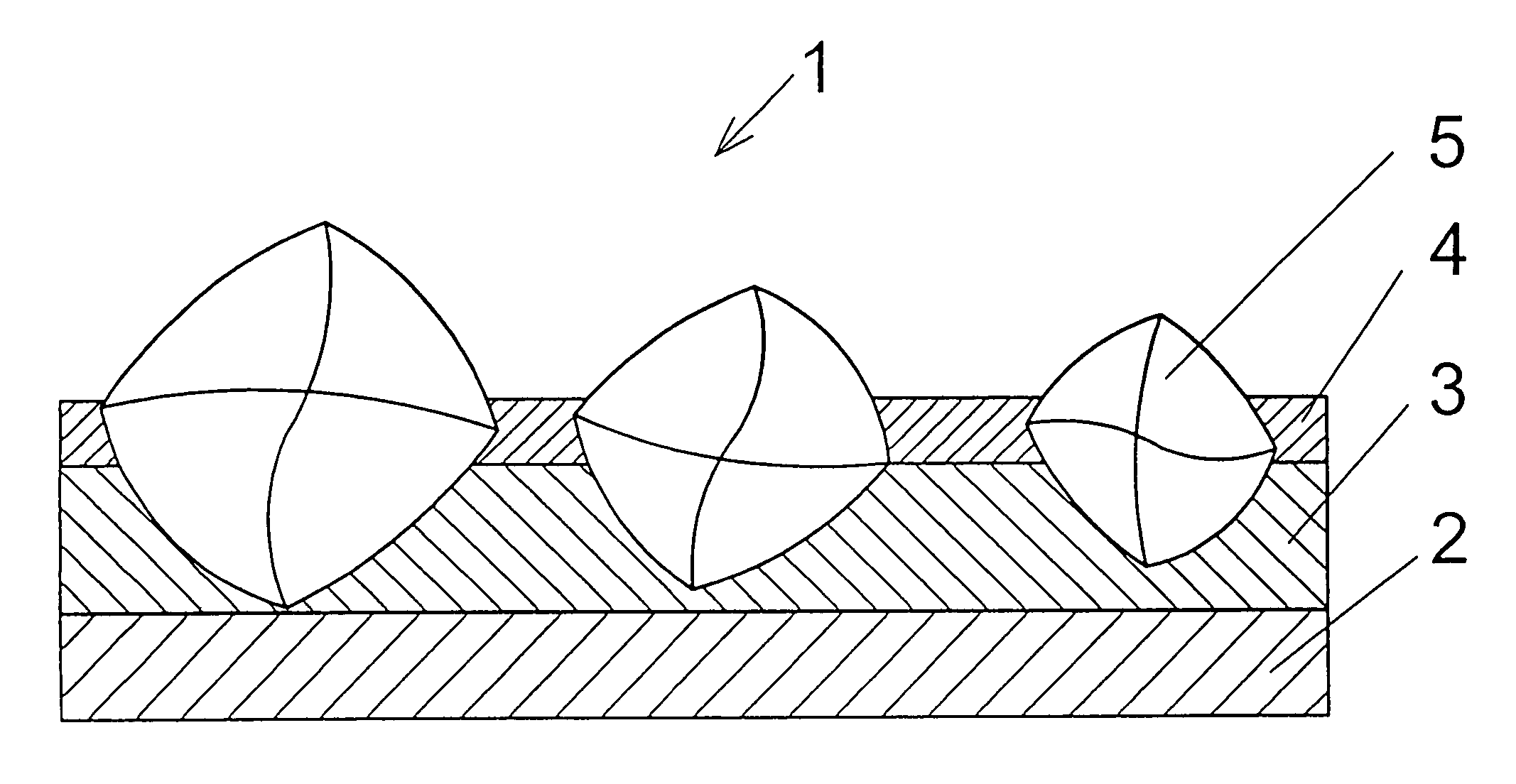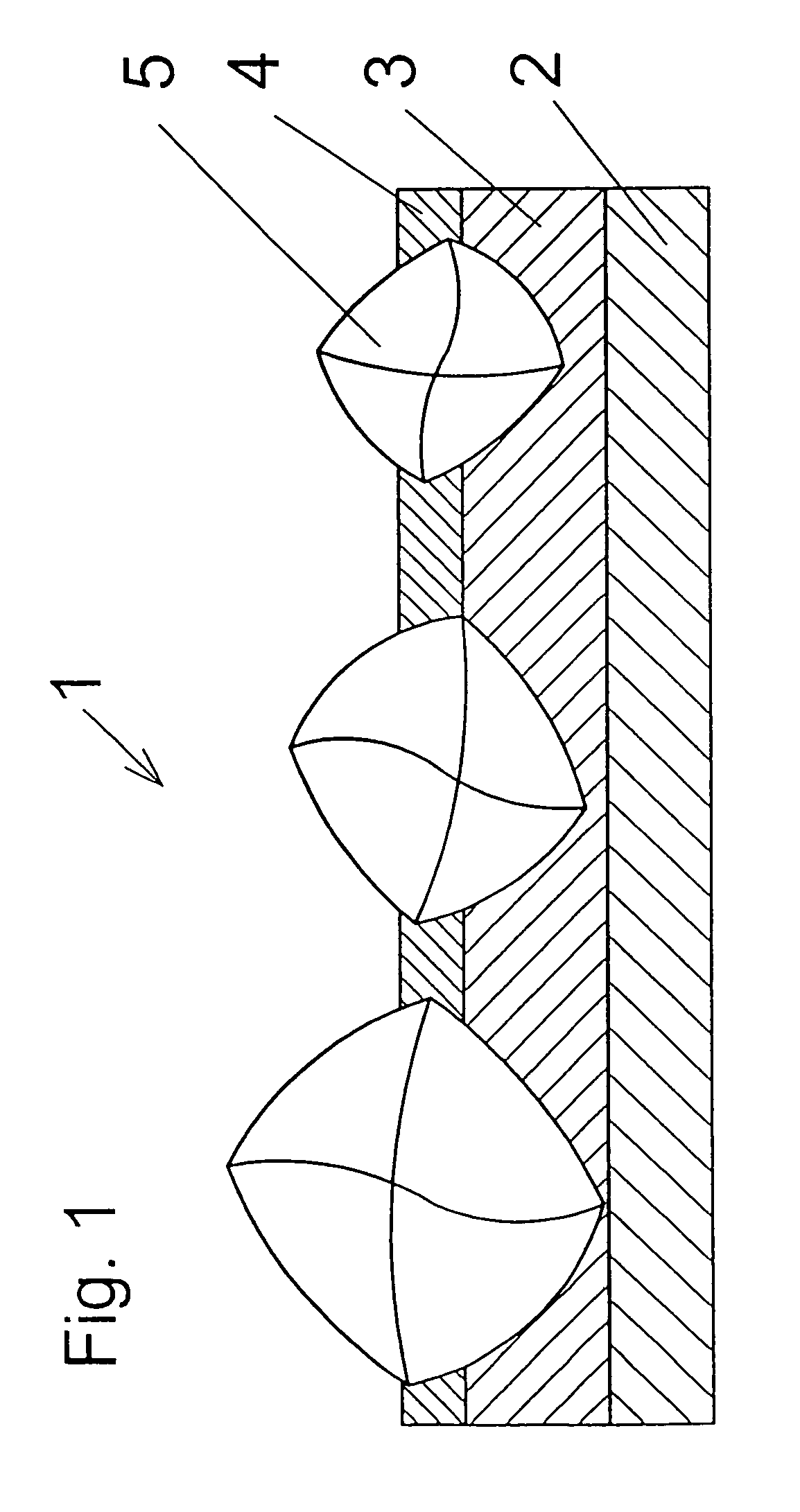Diamond electrode and method for production thereof
a diamond electrode and diamond technology, applied in the field of diamond electrodes, can solve the problems of diamond layer being detached, diamond electrodes not suitable for coating, diamond electrodes not suitable for all metals, etc., to prevent oxidizing agents from penetrating deep into the pores, and excessive deep oxidation from occurring
- Summary
- Abstract
- Description
- Claims
- Application Information
AI Technical Summary
Benefits of technology
Problems solved by technology
Method used
Image
Examples
Embodiment Construction
[0036]The diagrammatic embodiment of an electrode 1 designed in accordance with the invention as shown in the FIGURE of the drawing comprises a layer 2 of a substrate material, a metallic embedding layer 3 for diamond particles 5 which project outward above the layer 3, and an oxide layer 4 which passivates and seals the embedding layer 3 between the individual diamond particles 5.
[0037]In particular a suitably mechanically stable material is used as material for the substrate layer 2 and can preferably also be employed for contact-connection of the electrode. In the case of the single-side coating of the substrate material as shown, it is preferable to use a material which can form a nonconductive oxide layer. An example of a typical, particularly suitable material is titanium sheet. The embedding layer 3 consists of an oxide-forming metal or an oxide-forming metal alloy. In particular magnesium alloys, but also alloys which at least partially comprise elements which are able to fo...
PUM
| Property | Measurement | Unit |
|---|---|---|
| grain size | aaaaa | aaaaa |
| grain size | aaaaa | aaaaa |
| grain size | aaaaa | aaaaa |
Abstract
Description
Claims
Application Information
 Login to View More
Login to View More - R&D
- Intellectual Property
- Life Sciences
- Materials
- Tech Scout
- Unparalleled Data Quality
- Higher Quality Content
- 60% Fewer Hallucinations
Browse by: Latest US Patents, China's latest patents, Technical Efficacy Thesaurus, Application Domain, Technology Topic, Popular Technical Reports.
© 2025 PatSnap. All rights reserved.Legal|Privacy policy|Modern Slavery Act Transparency Statement|Sitemap|About US| Contact US: help@patsnap.com


